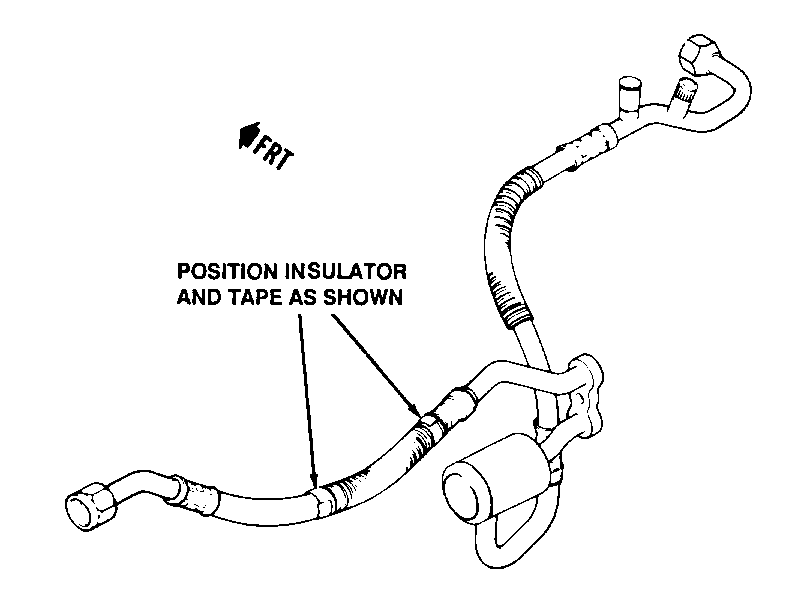ABRASION OF A/C HOSE FROM FAN HOUSING (REPAIR PROCEDURE)

SUBJECT: ABRASION OF A/C HOSE AGAINST ENGINE COOLING FAN HOUSING (REPAIR PROCEDURE)
VEHICLES AFFECTED: 1990-91 "L" CAR WITH 3.1L LHO ENGINE
Condition:
----------- Some 1990-91 L cars, equipped with a 3.1L LHO engine, have shown evidence of A/C hose (suction side) rubbing against bottom brace of engine cooling fan (Refer to Figure 1).If the plastic insulator that protects the hose is not in proper position and the "weight" of the hose against the brace is "heavy" enough, damage may occur to the hose and could cause a refrigerant leak.
Cause:
-------- The surface of the braces edge is formed to produce a "sharp" (90 degree) angle. This condition, in combination with the plastic insulation not being in proper position, may cause a "cut" in the hose.
Correction:
------------ By using a standard "flat" file, file both the leading and trailing edges of the brace, as shown in Figure 1, to create a "rounded" edge. In addition, reposition the plastic insulator against the metal crimp connection on the hose. Secure both ends of the insulator to the A/C hose using common "black" electrical tape (locally attained part). Refer to Figure 2.
This repair must be done whenever the hose assembly is replaced. In addition, it is recommended that all 1990-91 "Ll' vehicles, equipped with the 3.1L LHO engine, be observed for this condition during routine service, and procedure be performed if condition is found.
* If replacing hose, perform during replacement procedure, using current applicable labour procedure for hose removal/replacement.
* If condition is observed without hose rub-through, remove cooling fan assembly and perform procedure on bench. Use current applicable labour procedure for fan removal/replacement.
Use the most applicable Labour Operation and Time from the Canadian Labour Time Guide.


General Motors bulletins are intended for use by professional technicians, not a "do-it-yourselfer". They are written to inform those technicians of conditions that may occur on some vehicles, or to provide information that could assist in the proper service of a vehicle. Properly trained technicians have the equipment, tools, safety instructions and know-how to do a job properly and safely. If a condition is described, do not assume that the bulletin applies to your vehicle, or that your vehicle will have that condition. See a General Motors dealer servicing your brand of General Motors vehicle for information on whether your vehicle may benefit from the information.
